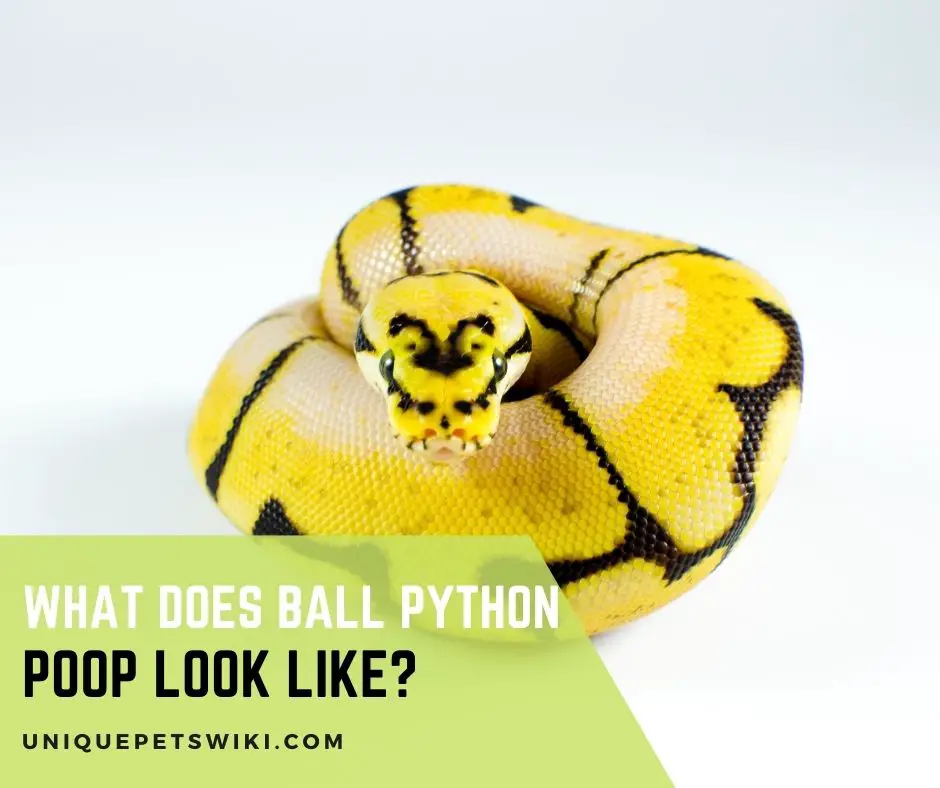Ball pythons are easy to care for as long as you keep them in a habitat with ideal heating and humidity and offer them a healthy diet. Poop is a common thing that you should expect as a pet owner and understanding what is normal or not can help determine if your pet snake has any problem.
A healthy ball python poop usually comprises two parts: a brown to dark brown part and a urate part, usually yellowish and in solid form.
The poop is usually small to medium-large, like dog or cat poop. The size of a ball python poop will depend on the ball python species, what it eats, and how much it is drinking.
Knowing everything about your ball python poop is very important as it helps to quickly detect any problem with your snake. This post will help highlight everything you need to know about a ball python poop and what you can do if your ball python is not pooping.
This article has been reviewed by Dr. Gospel. Read more about our knowledge control process here.
Contents
What Does Ball Python Poop Look Like?
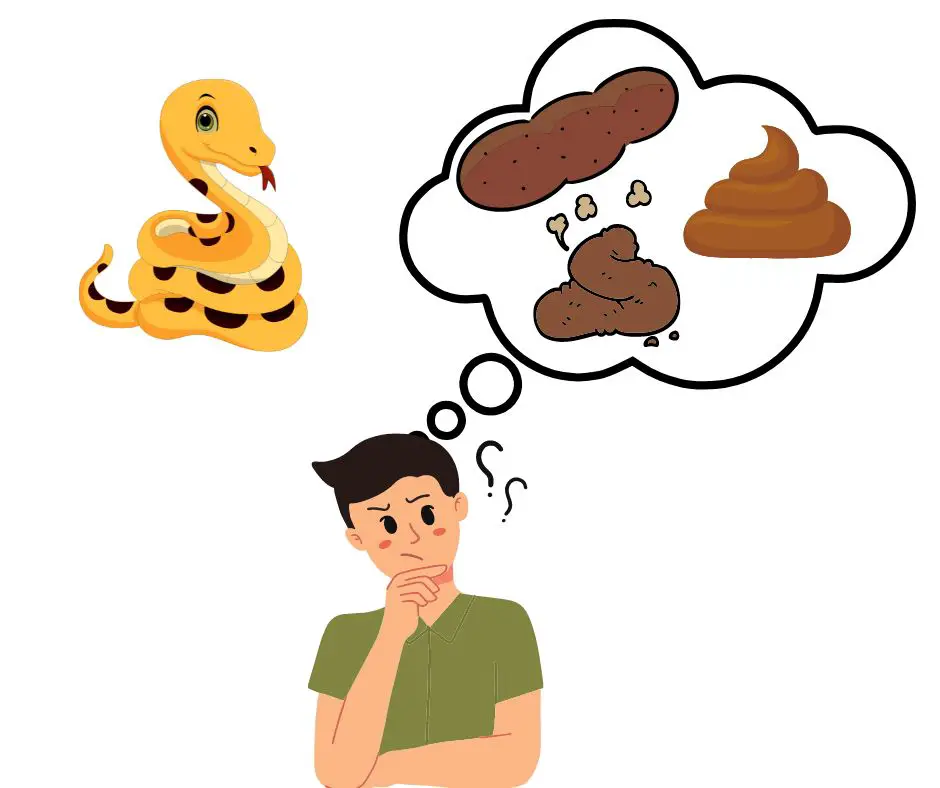
A healthy ball python poop usually comprises a light smell and brown to dark brown feces with a chalky white urate. The urate is solid and can even be in different colors, ranging from white to orange.
Chalky white-like substances known as urates. You should note that the urate may be of different colors, so if your pet’s own isn’t white, but yellow or orange, don’t worry; except there’s a significant change in color.
It is also possible to see a small amount of mucus or liquid urine attached to the urates. Ball python poops are usually small to medium-large based on several things like how hydrated your python is, what your python eats, and the ball python itself.
However, it is usually less than 4 inches long.
How Often Do Ball Pythons Poop?
Your pet is able to poop once its meal is digested. Unlike mammals, a ball python will do one large poop after a digested meal.
A ball python usually poops between 5-7 days after eating. Unlike mammals that can poop numerous times after digesting their meals, a ball python will only poop after digesting its meal. This indicates that pooping relates to how often you feed your ball python.
Therefore, a baby or juvenile ball python poops more often than an adult ball python under normal circumstances. How often your ball python poops will also depend on the size of meal you feed your ball python and the temperature in their enclosure.
Do Ball Python Eat Their Own Poop?
No, ball pythons don’t eat their own poop. Ball pythons are not like most animals that eat their own poops to get nutrients. Ball pythons usually excrete about 9% of what they eat after some days.
This shows that about 91% of their food will be absorbed into their body and use it for their energy and growth. Therefore, there is no reason for them to eat their own poop for additional nutrients.
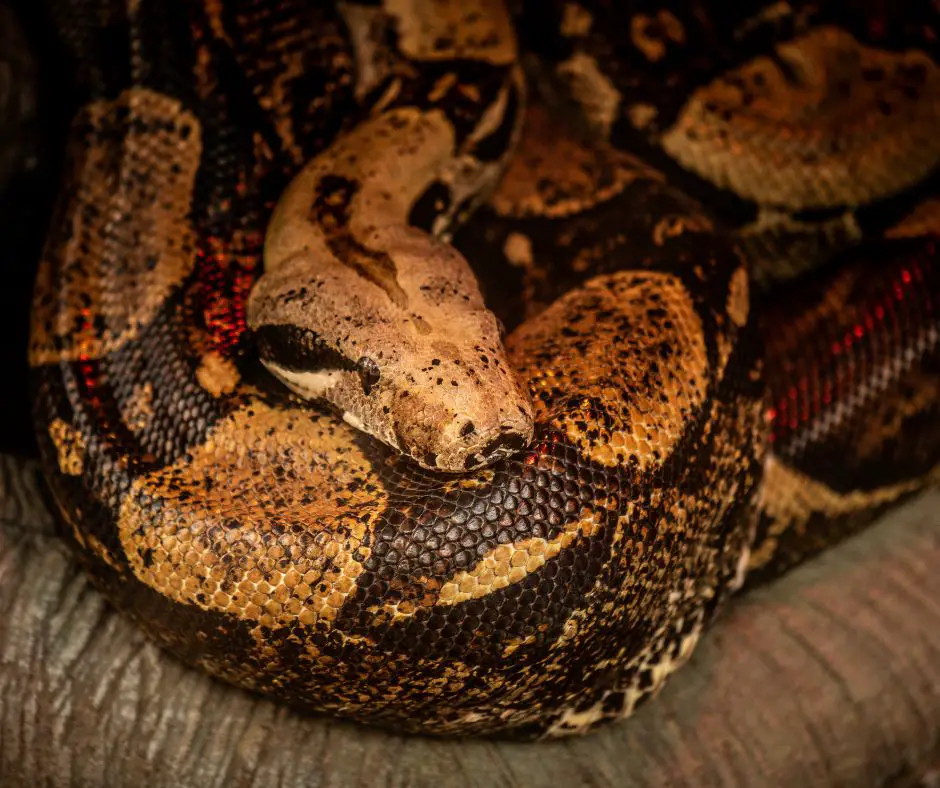
Does A Ball Python Poop Smell?
Yes, ball python poop usually has a mild to a strong smell. However, the smell will depend on where your ball python pooped and the poop size. For instance, small poop will smell less, and also, if you ball python poop in absorbing bedding.
The good thing is that ball pythons don’t usually poop very often, and you don’t really have to worry about the smell if you spot clean their enclosure as soon as you see the poop. You can also use a substrate that absorbs waste to help keep the smell at a minimum. However, be sure to check in with the veterinarian to ensure it will not harm your ball python.
Zoo Med Forest Floor Bedding, 8.8 Litre
- 100% natural cypress mulch
- All natural green "product"
- Recommended terrarium substrate for many species of snakes, lizards, land turtles, tortoises, frogs, toads, salamanders, tarantulas
Last update on 2022-12-29 / Affiliate links / Images from Amazon Product Advertising API
However, you may have to be worried if your ball python’s poop has a foul smell. This can indicate that it is suffering from internal parasites, and you may need to take a poop sample to the vet for fecal testing.
7 Abnormal Shades of Ball Python Poop
It is common for ball pythons to poop yellow or green poop occasionally if your vet has declared your python healthy. However, you may start to worry if you notice a sudden change in the coloration of your ball python’s poop.
This is because an abnormal color or shape of a ball python’s poop may help indicate that something is wrong with your pet.
Furthermore, you can determine if something is wrong with your ball python if it has a foul smell. The texture of the poop can also indicate if something is wrong with the poop.
For instance, a small or dry-looking poop can indicate that your ball python is dehydrated.
Some of the abnormal shades of ball python poop are stated below.
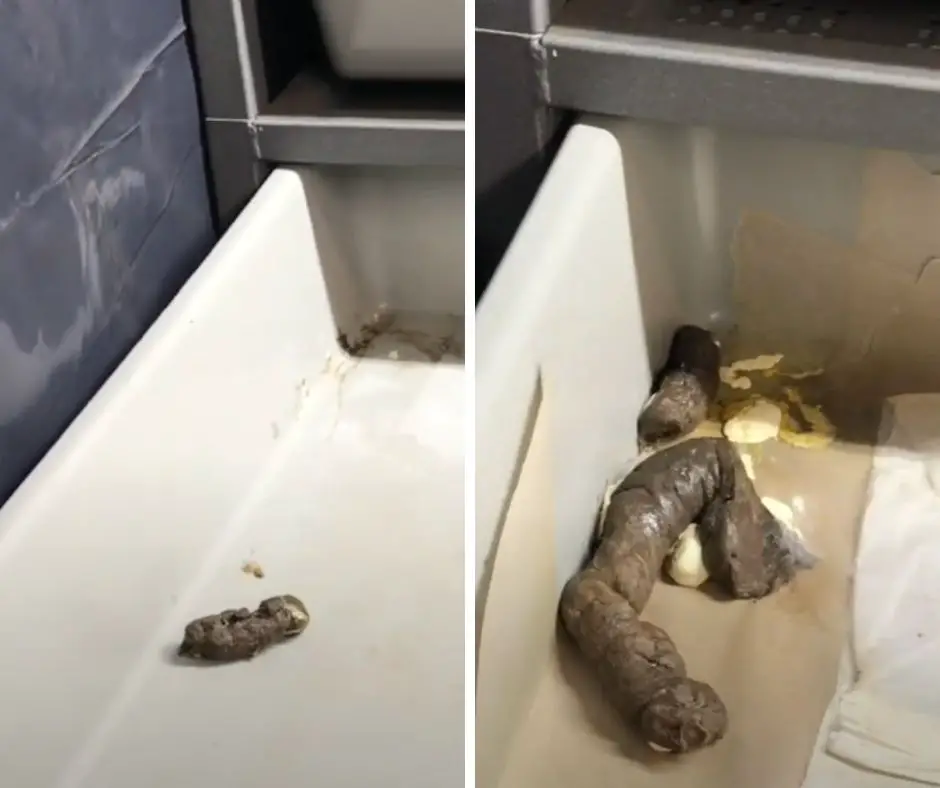
Note: Once you notice any drastic change in your ball python’s poop, collect the poop and take it to an exotic animal vet within 24 hours for testing.
| Coloration | Signs | Threat Level | Action Needed |
| Green poop | their poop is green in color | Serious | Consult with your vet |
| Yellow poop | yellow colour | It’s not uncommon to see some yellow coloration though, but if your dog hasn’t had this type of poop before, then you should contact your vet. | Consult with your vet |
| Red snake poop | Ball python poop is red | Very serious | Consult with your vet as soon as possible. |
| White snake poop | Ball python poop is white coupled with weight loss, lethargy, and lack of appetite | Serious | Consult with your vet as soon as possible |
| Poop becomes too dry | Fresh poop is dry | Serious | Provide access to fresh water and consult the vet if it continues |
| Diarrhea | Ball pythons excrete loose and watery stool, the poop has a foul smell, multiple poop after a meal. | Serious | Consult with the vet |
| Constipation | Ball python is not pooping, stops eating, swelling or bulge above ball python’s cloaca | Very serious | Give it a belly massage, increase humidity in the enclosure, provide access to fresh water, give a warm bath, consult with a vet. |
Green Poop
A green poop, especially if it is the chalky part of the poop, is healthy. However, it is not healthy for your ball python’s poop to be green as it can indicate that your snake has an internal infection.
A green poop usually means that your snake is not eating and is deriving its nutrients from the fat reserves.
You can consult with your exotic vet for treatment.
Yellow Poop
It is common for a ball python’s poop to be yellow. This is because ball python urates range from white to yellow, and the urates can then mix with the poop to give it a yellow color.
However, you may need to make an appointment with your vet if you are sure that your snake’s poop is yellow and it is not because of the urate mixing with it.
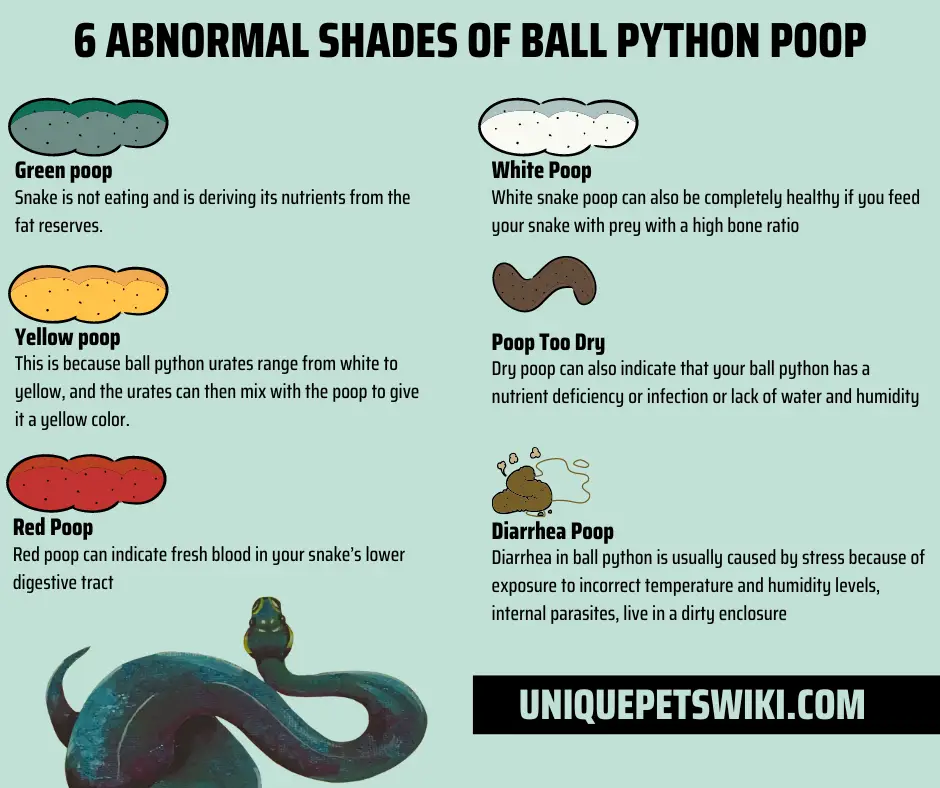
Red Snake Poop
Seeing that a ball python’s poop is red is usually very alarming to most snake owners. A red poop usually indicates the presence of blood. However, this blood is not from your snake’s food because the snake typically digests the blood completely, and it will turn to a maroon or black color.
Having a red poop can indicate fresh blood in your snake’s lower digestive tract. The best thing to do is consult your vet for treatment as soon as possible.
White Snake Poop
Generally, ball python urate is typically white. Therefore, you need to determine whether it is the poop or the urate that is white. However, an old ball python poop can turn white after it dries up.
Furthermore, white snake poop can also be completely healthy if you feed your snake with prey with a high bone ratio. You can start to worry and consult with your vet if your snake is excreting white poop and it is showing these symptoms.
- Weight loss
- Lack of appetite
- Lethargy.
Poop Becomes Too Dry
Your ball python poop may excrete dry poop if it does not have constant access to fresh water or the humidity in the enclosure is not at an ideal range.
You can then confirm that your ball python is dehydrated by pinching the skin on its lower body and watching if it takes a few moments to snap back.
You can treat this by ensuring your ball python has constant access to fresh water, and the humidity is at an optimal range.
However, a dry poop can also indicate that your ball python has a nutrient deficiency or infection. In this case, the best thing to do is to consult your vet for the best way to treat this.
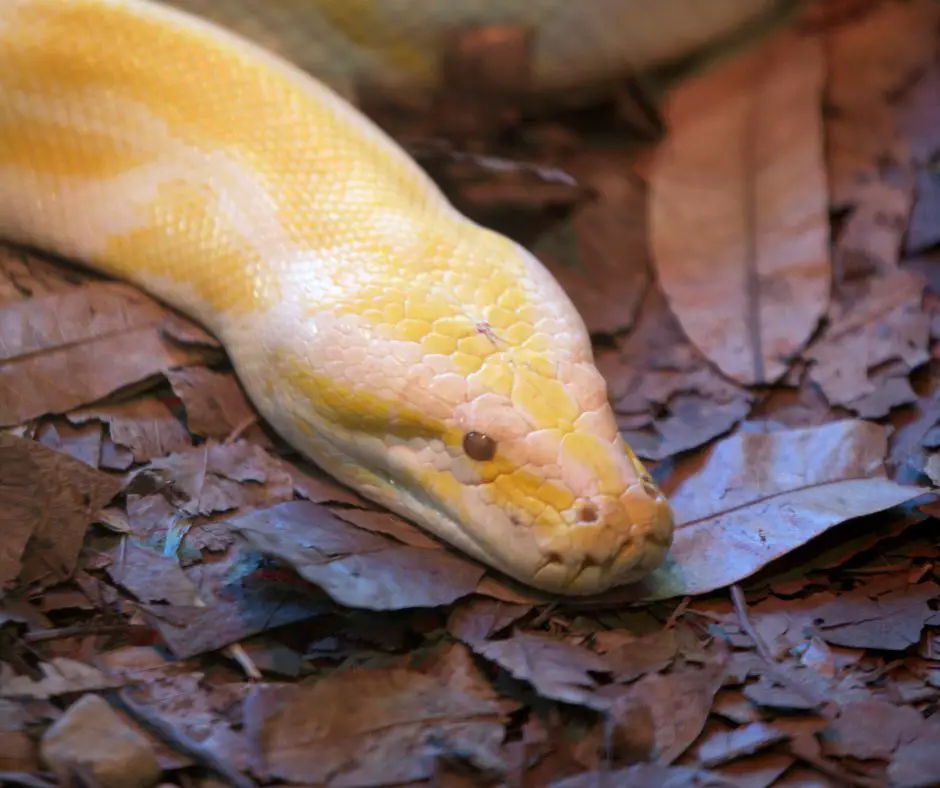
Diarrhea In Ball Pythons
Ball python can also have diarrhea, and it can turn fatal if not treated. Some of the signs that your ball python has diarrhea are
- Foul smell
- Runny poop
- Presence of multiple poops in your snake’s enclosure after a meal.
- Lethargy
Diarrhea in ball python is usually caused by stress because of exposure to incorrect temperature and humidity levels, internal parasites, the housing of your snake in a dirty enclosure, your snake not getting a well-balanced diet, and if you feed your snake with a wet rodent or you don’t thaw out the rodent properly.
The best thing to do if your ball python has diarrhea is to first determine the cause, and this will then give you an insight into the best way to treat the problem.
Providing your veterinarian with complete information will help with determining the root cause of diarrhea and subsequent definitive diagnosis.
Not Pooping (Constipation)
Ball python can also get constipated, and treating it before it becomes a health problem is the best thing to do. This is because constipation can lead to impaction if not treated immediately. Impaction is a health problem that can even be fatal and may even require surgery if detected late.
You can determine that your snake is impacted if it stops eating or you notice a swelling or bulge above its cloaca. Constipation in ball python usually occurs because of dehydration, low humidity, feeding your snake with large meals, and low temperature in the enclosure.
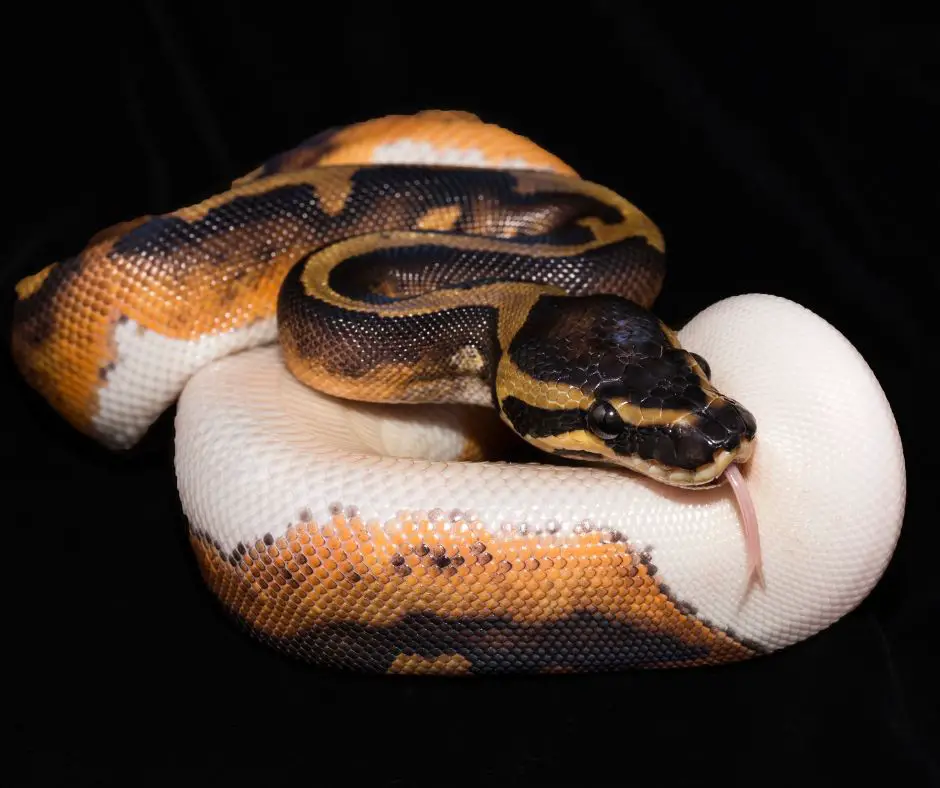
How To help A Ball Python Poop
As stated before, a ball python usually poops between 5-9 days after eating. Therefore, it is normal to feel concerned if your ball python is not pooping, as it may indicate something is wrong with your snake. Some of the ways that you can help your ball python poop are stated below.
- Give your python a warm bath
- Give it a belly massage
- Feed your ball python with smaller prey
- Allow your snake to exercise by handling it.
- Soak the prey before offering it to your pet.
- Increase the humidity in your ball python’s enclosure.
- Ensure your snake has access to fresh water.
- Ensure the temperature in your ball python’s enclosure is at the optimal range.
- Give your ball python laxative to help loosen the droppings.
- Consult with your vet for the best treatment.
How Do You Clean Ball Python Poop?
It is recommended that you remove your ball python poop once you see it. You can do this by removing the substrate with the poop or replacing newspaper or paper towels based on the type of substrate you are using.
You will also need to clean the substrate thoroughly every month. You will remove all the substrate and sterilize the enclosure before you put a clean substrate in your snake’s enclosure.
Cold Life Easy to Clean Sifting Litter Scoop Shovel for Small Pets
- The Cold Life sifting scoop from Royal pet is a nylon-based scoop designed to easily remove waste from your reptile's terrarium
- Angled head and wedge design easily gets to the corners
- Keep your reptiles clean and happy by tidying up their home with a few passes with this scoop
- Easy to clean, dishwasher safe
- Dimensions: 10" X 3.25" X 2"
Last update on 2022-12-29 / Affiliate links / Images from Amazon Product Advertising API
Vet comment
Getting to know your ball python’s poop is essential! It will allow you to identify the normal from the abnormal.
A normal ball python poop would be tubular, dark brown in color with chalky-white urates streaked within.
Not to worry, you. will get to know what your normal/abnormal ball python’s poop is with regular cleaning of the enclosure.
Be sure to visit the vet if you notice anything out of the ordinary!
Conclusion
A great way to determine the health of your pet is through their poop. You can quickly determine when your ball python is suffering from issues like infection, impaction, or low humidity levels by examining their poop.
A healthy ball python poop is usually brown or black, and it is accompanied by a chalky white urate. Once you notice anything other than this may be an indication that your pet snake is suffering from an issue.
We hope this article helps give you an insight into what may be wrong with your snake just by looking at its poop.
